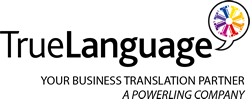Medical and scientific translations require an exceptional level of accuracy, technical expertise, and linguistic precision. A single mistranslation in a medical document or scientific study can lead to severe consequences, from regulatory non-compliance to patient safety risks. Traditionally, these translations have relied heavily on highly skilled human translators with specialized knowledge. However, advancements in artificial intelligence (AI) are revolutionizing the industry, enhancing efficiency, accuracy, and consistency while still requiring human oversight to ensure quality.
In this article, we explore how AI is transforming medical and scientific translations, the benefits it offers, and the challenges that must be addressed to maximize its effectiveness.
The Role of AI in Medical and Scientific Translations
AI-powered translation technologies have advanced significantly in recent years, moving beyond simple word-for-word conversions to more nuanced, context-aware translations. The primary AI-driven tools used in medical and scientific translations include:
1. Neural Machine Translation (NMT)
Neural Machine Translation (NMT) has become the gold standard in AI-driven language translation. Unlike traditional rule-based or statistical machine translation models, NMT leverages deep learning and artificial neural networks to understand the context of words and phrases. This is particularly beneficial in medical and scientific translations, where terminology is highly specialized, and accuracy is critical.
For example, NMT engines trained on vast datasets of medical literature and research papers can more accurately translate complex phrases such as “cytokine storm syndrome” or “pharmacokinetics of monoclonal antibodies” while maintaining contextual integrity.
2. AI-Assisted Terminology Management
Medical and scientific texts often contain domain-specific terminology that must remain consistent across multiple documents. AI-driven terminology management tools help ensure uniformity by recognizing and applying standardized terms throughout a translation. These tools integrate with translation memory (TM) systems to maintain consistency and reduce errors in frequently used terms, benefiting pharmaceutical companies, clinical research organizations, and medical device manufacturers.
3. Automated Quality Assurance (QA) Tools
AI-powered quality assurance tools can quickly scan translations for errors, inconsistencies, and formatting issues. These tools use natural language processing (NLP) to detect potential mistranslations, missing context, or ambiguous terminology, flagging them for human review. AI-assisted QA checks help translators focus on refining the final output rather than spending excessive time proofreading.
4. AI-Enhanced Speech Recognition and Transcription
AI-driven speech recognition and transcription technologies play a crucial role in the translation of medical and scientific content. Medical professionals and researchers frequently rely on voice notes, dictated patient reports, and recorded lectures. AI can automatically transcribe spoken content into text, which can then be translated efficiently. This technology is particularly useful in real-time translation of telemedicine consultations and international scientific conferences.
5. AI-Powered Localization for Medical and Scientific Content
Localization is critical in medical and scientific translations, as different countries have unique regulatory requirements, cultural norms, and medical terminologies. AI tools can assist by adapting translated content to meet regional standards, whether it’s ensuring compliance with EU Medical Device Regulations (MDR) or aligning with FDA guidelines in the United States.
The Benefits of AI in Medical and Scientific Translations
AI is not meant to replace human translators but rather to enhance their capabilities. Here are some of the key benefits AI brings to medical and scientific translations:
1. Increased Speed and Efficiency
AI can process and translate large volumes of text far faster than human translators. This is particularly beneficial in urgent scenarios, such as pandemic response efforts, where medical information needs to be rapidly disseminated across multiple languages.
2. Enhanced Accuracy Through Machine Learning
AI models continuously improve by learning from new data. The more medical and scientific translations an AI system processes, the better it becomes at recognizing patterns, terminology, and context, reducing the likelihood of errors.
3. Cost Savings
By automating certain aspects of the translation process, AI reduces the workload for human translators, leading to cost savings for medical and scientific organizations. This is particularly valuable for institutions that require frequent updates to clinical guidelines, research papers, and regulatory documentation.
4. Improved Consistency Across Documents
AI-driven translation memory and terminology management tools help maintain consistency across multiple translations, ensuring that key terms and phrases are used uniformly throughout various documents and reports.
5. Accessibility and Global Reach
AI-powered translation tools make it easier to provide multilingual medical and scientific content, expanding access to healthcare information, research findings, and medical guidelines for a global audience.
Challenges and Limitations of AI in Medical and Scientific Translations
Despite its many advantages, AI still has limitations that must be addressed:
1. Lack of Contextual Understanding
While AI has improved in recognizing context, it still struggles with certain nuances, idiomatic expressions, and highly specialized terminology that may not have direct translations.
2. Regulatory and Compliance Risks
Medical translations must adhere to strict regulatory requirements. AI-generated translations still require human review to ensure compliance with industry standards, such as ISO 17100 for translation services and ISO 13485 for medical device translations.
3. Ethical Concerns and Data Privacy
Medical translations often involve sensitive patient data. AI systems must comply with privacy laws like HIPAA (Health Insurance Portability and Accountability Act) and GDPR (General Data Protection Regulation) to ensure that personal health information is protected.
4. Dependence on High-Quality Training Data
AI translation models require extensive training data to function effectively. Inaccurate or biased training data can lead to poor translations, particularly in languages with limited available datasets.
The Future of AI in Medical and Scientific Translations
As AI continues to evolve, its role in medical and scientific translations will only expand. The integration of AI with human expertise, known as augmented translation, will become the standard, combining the speed and efficiency of AI with the critical thinking and contextual understanding of human translators.
Future advancements in AI, such as large multimodal models (LMMs) capable of processing text, images, and audio simultaneously, will further enhance translation quality. Additionally, real-time AI-powered translation tools may become indispensable in global healthcare settings, enabling seamless communication between medical professionals and patients across different languages.
Summarizing
AI is transforming the field of medical and scientific translations, making them faster, more accurate, and more cost-effective. However, AI alone cannot fully replace human translators, particularly when it comes to contextual understanding, compliance with regulations, and ensuring ethical standards. The future of medical and scientific translations lies in a human-AI collaboration, where AI handles repetitive tasks and linguistic consistency while skilled translators refine the final output.
At TrueLanguage, we leverage cutting-edge AI technology while ensuring expert human oversight to provide the highest quality medical and scientific translations. Contact us today to learn how our AI-powered translation solutions can help your organization navigate the complexities of multilingual medical and scientific communication.


